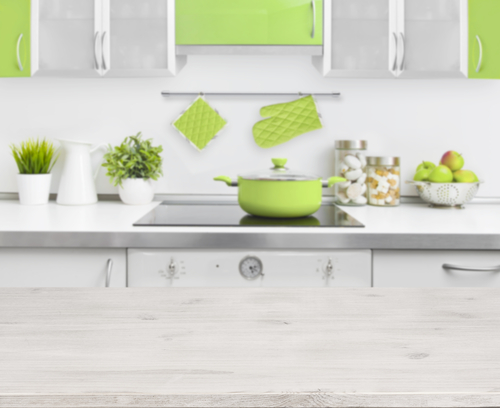Green Kitchen: A Guide to Low Energy Cooking and Baking
If you’re looking to embrace a green lifestyle and going green in the kitchen start by reevaluating your energy consumption in the kitchen. Energy consumed by your oven, stove top and various appliances, could be a greater contributing factor to your overall carbon footprint then you would think. Whether you choose to ditch appliances altogether and embrace raw food or revamp your cookware to be as efficient as possible, this guide to low energy cooking and baking has an option that’s right for you.

Eat More Raw and Fermented Foods
The most obvious way to cut your energy consumption in the kitchen is to choose raw and fermented foods over those that require cooking or baking. Not only does this reduce energy usage, but it also allows you to reap the health benefits of raw foods such as higher vitamin C content and retention of polyphenols, which have been shown to have antioxidant properties and to reduce the risk of cardiovascular disease and cancer.
Be Mindful of Your Cookware
When baking in the oven or cooking on your range, use cookware that is appropriate for your burner size and reduce the cooking temperature. If your pan is too small or too big for the burner, you could see significant heat loss and/or uneven cooking. When cooking on the range, be sure to put a lid on your pot to further reduce heat loss and to speed up the cooking process. When baking or roasting in the oven, choose a glass or ceramic roasting pan that is more efficient and can reduce the temperature required for cooking.
Utilize One-Pot Recipes
One-pot recipes are not only a Pinterest fad, they’re also a great way to reduce the energy consumed by using your oven and burners simultaneously or using multiple burners on your range. One-pot recipes are extremely diverse and include casseroles, soups, stir-fries, stews and so much more. With several recipes to choose from, you’re bound to find a favorite dish that is also energy friendly.
Invest in Energy-Friendly Appliances
Comparing the energy consumption of appliances can be tricky. If you’re ready to purchase new appliances but don’t know where to start, look for appliances that are ENERGY STAR rated, meaning they’re backed by the Environmental Protection Agency (EPA) to deliver the highest quality, performance and savings for consumers that are mindful of their energy consumption.
Think Outside of the Box
Cooking and baking are not restricted to the stove or oven. Take advantage of alternative appliances that reduce your energy consumption while still giving you the opportunity to cook and bake. Cooking with a slow cooker, Crock-Pot or Instant Pot consumes less energy than cooking with an electric oven (if you have a gas oven, energy consumption can vary depending on the length of cook-time). Also, keep in mind the time of year and the climate of where you live. During a cold winter where the heater is always on, turning on the oven to bake could reduce the amount of heat you need to warm up your home and hence, could be more efficient overall. On the other hand, if you find yourself cranking up your A/C in the summer to offset the heat coming off your stove, using a Crock-Pot or Instant Pot could reduce the overall energy footprint of your home.
Meal Prep Once a Week
An oven consumes a lot of energy, and pre-heating every time you need to roast or bake isn’t an efficient use of energy. Instead, carve out one day per week for baking and roasting. You will reduce the energy loss from preheating and by grouping dishes that can be prepared at the same temperature, you will maximize your oven’s energy consumption. You should even take advantage of the residual heat after turning your oven off to finish baking or keep dishes warm until mealtime.
About 10 percent of energy consumed in the average U.S. household occurs in the kitchen, take steps to reducing consumption by cooking and baking through alternative food choices (e.g., eating raw), alternative appliances which are more environmentally friendly and emphasizing efficient use of cookware and oven time.
To make preparing meal easier check out five ways to organize your kitchen counter.
If you have any green tips or ideas that have worked well in your kitchen share them in the comment section!
Please share this article to spread the word of how to live green!
